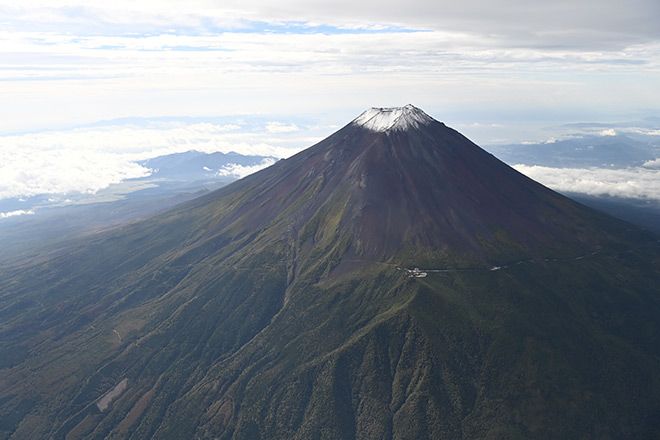Japan is stepping up its volcano research that trails far behind its advanced studies on earthquakes despite being home to 111 active volcanoes, about 10 percent of the global total.
The government established the Headquarters for Volcano Research Promotion within the science ministry in April.
This new entity is tasked with studying the probability of eruptions for active volcanoes found from Hokkaido to Okinawa Prefecture and formulating observation plans.
Compared to the vigilance against earthquakes, Japan’s volcano research is viewed as 30 years in the past, as well as poorly funded and staffed.
Toshitsugu Fujii, an expert on magmantology and professor emeritus at the University of Tokyo, chairs the policy committee of the recently formed headquarters.
“While a government-led project to develop young researchers has made progress, we still have a long way to go before solving the shortage of researchers,” Fujii said. “The government needs to go all out to increase research positions.”
Japan had 185 volcanologists, less than 60 percent of its 320 seismologists, as of fiscal 2022. Aside from their small number, specialists are also growing older.
Only 117 of these researchers are engaged in monitoring active volcanoes, a number deemed “insufficient” by the science ministry.
Fiscal 2022 also saw a total of 3 billion yen ($20.8 million) earmarked for volcano research, according to the science ministry. This is about a quarter of the 11.1 billion yen allocated to earthquake research.
Looking at past funding, the country spent 78 billion yen on volcano research over the past 28 years, roughly a sixth of the 451 billion yen on earthquake research.
This history of limited budgets comes down to frequency—occasional volcanic disasters make it difficult to produce research achievements.
The Headquarters for Earthquake Research Promotion was formed in 1995 after the Great Kansai Earthquake devastated Kobe and surrounding areas in January that year.
The earthquake headquarters has since led government efforts to create observation networks and study active faults for nearly three decades.
Along with establishing its sister headquarters on volcanoes, the government also designated Aug. 26 as volcanic disaster prevention day. The designation is meant to raise public awareness.
It coincides with the day Japan’s first volcano observatory was set up in 1911 on Mount Asamayama, which straddles Gunma and Nagano prefectures.
FUJI’S SHADOW
The Sekotsuji district of Fuji in Shizuoka Prefecture stands 14 kilometers southeast of Japan’s tallest peak.
Were Mount Fuji to erupt, deadly levels of red-hot pyroclastic flows billowing and hurtling downhill at more than 100 kph could engulf the district if the rain of giant cinders doesn’t strike first.
The district’s 24 residents are to immediately evacuate if a Level 3 volcanic alert is issued prior to an eruption. This alert bans entry into areas around the volcano.
Shuji Kawamoto, 73, who heads the district’s voluntary organization for disaster prevention, participated in an evacuation drill on July 19.
Kawamoto helped residents who need assistance and arrived at an evacuation center in about 20 minutes by vehicle, but said he cannot tell whether residents would be able to evacuate smoothly if an actual alert was issued.
Mount Fuji has erupted about 180 times over the past 5,600 years, last blowing its top in 1707.
Recent research has led to an update of Mount Fuji’s estimated volume of volcanic material and the anticipated locations of vents where lava flows.
When the hazard map was adjusted in 2021, the number of people who need to evacuate increased about sevenfold to 116,000 in Shizuoka, Yamanashi and Kanagawa prefectures.
The basic evacuation plan was revised in March. It calls for a two-phase approach depending on the areas.
While those living close to vents are expected to flee by vehicle before an eruption, residents in areas outside the range of cinders and pyroclastic flows are to evacuate on foot after an eruption.
However, more than 90 percent of voluntary organizations for disaster prevention surveyed by the Shizuoka prefectural government in fiscal 2022 said they had not held disaster drills for a Mount Fuji eruption.
About 40 percent of the respondents also said they did not know what types of drills they should conduct.
Mitsuhiro Yoshimoto, who heads research at the Mount Fuji Research Institute of the Yamanashi prefectural government, said the mountain’s features are an outlier even among volcanoes in Japan.
“It is impossible to predict not only the timing of eruptions but also what kind of eruptive phenomena may occur,” he said. “The area where vents are expected to appear is also unparalleled in Japan.”
That’s even more reason to increase preparedness in his eyes.
“We must conduct both quick-impact evacuation drills and (school) education that steadily instills disaster awareness,” Yoshimoto said.
(This article was compiled from reports by Ryo Oyama and Reo Komeda.)


AloJapan.com